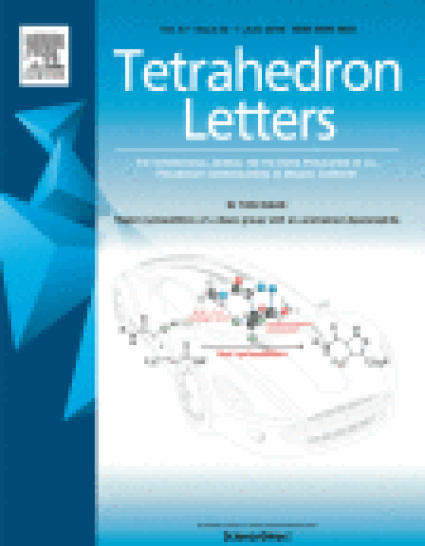
Article
Bismuth(III) Oxide Perchlorate Promoted Rearrangement of Epoxides to Aldehydes and Ketones
Tetrahedron Letters
(2000)
Abstract
Aryl-substituted epoxides and aliphatic epoxides with a tertiary epoxide carbon undergo smooth rearrangement in the presence of 10–50 mol% bismuth(III) oxide perchlorate, BiOClO4•xH2O, to give carbonyl compounds. The rearrangement is regioselective with aryl substituted epoxides and a single carbonyl compound arising from cleavage of benzylic C―O bond is formed. BiOClO4•xH2O is relatively non-toxic, insensitive to air and inexpensive, making this catalyst an attractive alternative to more corrosive and toxic Lewis acids such as BF3•Et2O or InCl3 currently used to effect epoxide rearrangements.
Disciplines
Publication Date
2000
Citation Information
Ram S. Mohan, Andrew M. Anderson, Jesse M. Blazek, Parie Garg, et al.. "Bismuth(III) Oxide Perchlorate Promoted Rearrangement of Epoxides to Aldehydes and Ketones" Tetrahedron Letters Vol. 41 (2000) Available at: http://works.bepress.com/ram_mohan/18/
